After a thorough review of eight telescope mounts, the Celestron Advanced VX (USA, EU) and the Sky-Watcher HEQ5 Pro (USA, EU) are recommended as excellent telescope mounts for starting astrophotography in 2024. These well-established options offer essential features like computerized control, autoguiding, periodic error control, ASCOM compatibility, and USB connectivity. With a capacity of about 14 kg, they can support mid-sized refractor telescopes, cameras, and tracking gear. For those open to newer designs, iOptron’s GEM28 (USA, EU) and CEM26 (USA, EU) are lightweight mounts that boast advanced features including PPEC and built-in WiFi. Additionally, the ZWO AM3 (USA, EU) presents a novel concept of an optional counterweight-free, lightweight harmonic drive mount.
Why do you need a telescope mount?
I often say that astrophotographers should “put their money where their mount is”. Just think about it. You can buy the most expensive astrophotography camera and telescope, but if you’re unable to accurately track the moving objects in the night sky – due to the Earth’s rotation – you’ll still end up with blurry pictures when taking long exposure astrophotography photos. That’s where your telescope mount comes in. Good quality telescope mounts are able to track deep-sky objects with great precision, enabling you to take long exposure photos. If you’re completely new to astrophotography and telescope mounts, I suggest you first take a look at this blog where I’ve attempted to answer the 10 most-often-asked questions about telescope mounts. A lot of the terminology and criteria I’m going to use are explained there.
In this blog, I’m discussing eight “beginner” telescope mounts with a minimum payload capacity of at least 10 kilos (22 pounds). Most people start their astrophotography hobby with a 3 to 4″ (70 to 100mm) aperture refractor telescope, or a typical 6 to 8″ aperture Newtonian telescope. Such telescopes need stable telescope mount, able to carry the telescope as well as other astrophotography gear like a camera, filter wheel and guiding gear. If you’re planning to do landscape astrophotography with a DSLR camera, you’re better off buying a good-quality star tracker as discussed here to track objects in the night sky. On the other hand, if you’re looking for a telescope mount that can carry heavier telescopes and astrophotography gear up to 20kg (44 pounds), check the advanced telescope mounts I discuss here.
What to look for in a good quality telescope mount to start Astrophotography
Below, I’ve pre-selected eight mounts based on several essential criteria that are essential for our beloved astrophotography hobby. First, all mounts are capable of equatorial tracking, which is necessary to track deep-sky objects and take long exposure photos. Additionally, each mount features a computerized GoTo system and an ASCOM option. This means they can automatically locate and track celestial objects, and they’re compatible with astrophotography software using the ASCOM standard. Essentially, you can control these mounts remotely using various astrophotography software, available on your smartphone, laptop, or PC. Trust me, manually adjusting your telescope mount on cold winter nights isn’t fun—I’ve been there.
As mentioned, all telescope mounts can handle payloads between 10 and 15 kilograms (22 to 33 pounds). I’ve excluded mounts with payloads under 10 kilograms (22 pounds) due to the “golden rule” of astrophotography. This rule suggests that your “beginner” telescope mount should be able to handle at least twice the weight of your astrophotography gear. So, if your gear weighs around 5 kilograms (11 pounds), your mount should handle at least 10 kilograms (22 pounds). This rule isn’t foolproof, but it is true that telescope mounts generally struggle more with tracking when nearing their maximum payload capacity. I’ve also omitted mounts with a payload capacity exceeding 15 kilograms (33 pounds). These are typically heavier, pricier mounts meant for astrophotographers with larger, heavier telescopes and astrophotography gear. If you’re interested in these “advanced” telescope mounts, check out this blog. Alternatively, if the mounts in this overview are too pricey, consider star trackers suitable to track the night sky with cameras and small telescopes for your night sky adventures.
Telescope mounts to start your astrophotography hobby in 2024
Let’s delve deeper into the advantages and disadvantages of each of the telescope mounts that I recommend for beginners in astrophotography. For those who appreciate statistics and data, I encourage you to explore this online table that allows you to filter and sort according to your preferred criteria. I’ve included links to reliable telescope shops across the USA and EU that offer great service. Alright, let’s begin.
#1: The Sky-Watcher EQM35-Pro
This mount stands out as the most budget-friendly option in my lineup, and it’s also incredibly lightweight. With a combined weight of just 10 kg or 22 lbs for the mount head and tripod, it’s ideal for those seeking portability without sacrificing functionality. Equipped with essential features for astrophotography—including a computerized GoTo system, auto-guiding, ASCOM compatibility, and Periodic Error Correction—the mount ensures precise tracking accuracy. It boasts the Sky-Watcher SynScan controller with a USB connection, facilitating easy integration with your PC, laptop, or MAC via ASCOM. Another advantage is its established presence in the market, with a community of users ready to offer assistance. However, it’s important to note the limited payload capacity of 10 kg (22 lbs), which may influence your decision. If your focus is primarily on widefield astrophotography with lightweight equipment like a compact refractor telescope and camera, this mount is an excellent fit. Yet, if you anticipate upgrading to heavier telescopes and tracking gear in the future, exploring other mount options might be useful.
The Sky-Watcher EQM35- Pro is available at Agena Astro (USA/WW), High Point Scientific (USA/WW), and Astroshop (EU/WW).
#2: The Celestron Advanced VX
I kicked off my personal astrophotography journey with the Celestron Advanced VX (AVX) telescope mount. The AVX delivers reliable performance at an accessible price point, boasting an impressive payload capacity of 14 kg (30 lbs). This ample payload capacity accommodates mid-sized telescopes, a filter wheel, a camera, and supplementary tracking gear, without issue.
Equipped with indispensable features like computerized GoTo, Autoguiding, ASCOM compatibility, and Periodic Error Correction, the AVX empowers astrophotography enthusiasts with all the essential tools they need. The Nexstar hand controller offers a user-friendly USB connection, enabling effortless connectivity to your laptop or computer. With ASCOM compatibility, seamless integration with leading astrophotography software such as Stellarium, NINA, Astrophotography Tool, or Sequence Generator Pro is at your fingertips. With a solid presence in the market for numerous years, the AVX boasts a devoted user base, reflected in its impressive 4.5 out of 5-star rating across various online platforms. Extensive resources and support from seasoned users are readily accessible online, ensuring prompt assistance whenever you need it.
While the AVX shines brightly, it’s important to acknowledge a couple of minor considerations. While the gear motors emit some noise, akin to an espresso machine at high speeds, this doesn’t detract from its overall performance. Additionally, while rare, there have been isolated reports of users receiving non-functional mounts, promptly resolved through replacement.
The Celestron Advanced VX is available at Agena Astro (USA/WW), High Point Scientific (USA/WW), and Astroshop (EU/WW)
#3: The EXOS2 with PMC Eight GoTo
The EXOS2 with PMC Eight GoTo is a gem in the midrange mount category, boasting several delightful surprises. With a respectable payload capacity of 12 kg or 28 pounds, it comfortably accommodates the gear needed for astrophotography adventures. Equipped with essential features like computerized GoTo, auto-guiding, and ASCOM compatibility, this mount ensures a smooth and seamless experience.
One standout feature is the inclusion of a belt drive, known to enhance tracking accuracy—an invaluable asset for capturing stunning multi-minute images of deep-sky wonders. Moreover, its quiet operation during slewing ensures peace and tranquility, making it neighbor-friendly. A notable advantage is the option for wireless connectivity via the PMC Eight GoTo module, catering to those who prefer the convenience of wireless over USB connections to their computer or laptop.
However, it’s important to address some user-reported challenges. While the Explore Stars APP software offers wireless control, a few users have experienced occasional crashes during operation, necessitating reconnection and realignment. Additionally, the absence of a hand controller means relying on an extra WiFi-enabled device for control—an aspect subject to individual preference. Furthermore, the lack of Periodic Error Control (PEC) may be a consideration for astrophotography enthusiasts. However, this can be mitigated by employing an additional guide scope and guide camera in tandem with software like PHD2. Overall, the EXOS2-GT presents a compelling option for astrophotography.
The EXOS2 with PMC8 GoTo is available at explore scientific (USA/WW), High Point Scientific (USA/WW), and Astroshop (EU/WW).
#4: The iOptron GEM28
In 2021, iOptron unveiled two new telescope mounts: the GEM28 and the CEM26, which warrants a brief introduction before delving into specifics. When iOptron announced their GEM28, my initial reaction was excitement for another entry-level astrophotography mount, swiftly followed by curiosity about the shift from their signature center-balanced mounts (CEMs). iOptron’s CEMs, distinguished by their “Z” design, prioritize stability by centering the telescope’s weight, resulting in lighter yet robust mounts compared to traditional German Equatorial Mounts (GEMs).
However, the introduction of the GEM28 indicates iOptron’s acknowledgment of the widespread acceptance of GEMs and their utility in higher latitudes, catering to diverse preferences within the astro-community. I applaud iOptron’s initiative in creating an equatorial mount, and the GEM28 stands out as a meticulously crafted model. With its impressive 13 kg (28 lbs) payload capacity, it comfortably accommodates mid-sized refractors, cameras, and guiding equipment. Remarkably, users report its tracking accuracy remains reliable even with heavier, longer focal length telescopes like a Celestron C8.
True to iOptron’s tradition, the mount is remarkably lightweight, weighing only 13 kg (28 lbs) with mount head and tripod combined. Equipped with essential features like computerized GoTo, auto guiding, and ASCOM compatibility, the GEM28 also boasts PPEC support, ensuring continuous and automatic error correction. Furthermore, its versatile connectivity options, including built-in WiFi, GoToNova hand controller, and USB connection, offer users flexibility in remote control. User reviews show that the iOptron GEM28 is a wonderful addition to the astrophotography mount market in the 10 to 15 kg payload capacity range.
The iOptron GEM28 is available at Agena Astro (USA/WW), High Point Scientific (USA/WW), and Astroshop (EU/WW)
#5: iOptron CEM26
The main difference between the iOptron GEM28 and the CEM26 lies in their mount designs. The GEM28 utilizes a German Equatorial Mount (GEM) design, which is a traditional style where the telescope is mounted on one side of the central axis, while a counterweight balances it on the other side. On the other hand, the CEM26 employs a Center-Balanced Equatorial Mount (CEM) design, featuring a “Z” configuration that centers the telescope’s weight for enhanced stability. Despite this distinction, both mounts offer similar features such as computerized GoTo, auto-guiding, ASCOM compatibility, and Permanent Periodic Error Correction (PPEC), making them appealing choices for astrophotography enthusiasts. Additionally, while the payload capacity of the GEM28 is slightly higher at 28 lbs (13 kg), the CEM26 offers a payload capacity of 26 lbs (12 kg), providing users with options based on their specific needs and preferences. The CEM26 is equipped with built-in WiFi and includes the GoToNova hand controller, which offers USB connectivity. User feedback is generally positive. Both the GEM28 and the CEM26 present compelling options for beginning astrophotography enthusiasts.
The iOptron CEM26 is available at Agena Astro (USA/WW), High Point Scientific (USA/WW), and Astroshop (EU/WW)
#6: The Sky-Watcher HEQ5 Pro
Before delving into the SkyWatcher HEQ5 Pro, it’s worth noting that in the USA, this mount may be marketed under a different brand name, the Orion Sirius EQ-G. Both products originate from the same Chinese Synta factory and are essentially identical twins. While the Orion Sirius EQ-G has been primarily available in the USA, the SkyWatcher HEQ5 Pro has been more prevalent in other regions.
With a longstanding presence in the astrophotography community, the SkyWatcher HEQ5 Pro is often regarded as one of the best telescope mounts. With a maximum payload capacity of 14 kg (30 lbs), the HEQ5 Pro fulfills all the payload requirements of beginner astrophotographers. Additionally, the motors operate relatively silently, allowing users to navigate to desired celestial objects without disturbing neighbors. The HEQ5 Pro supports essential features like computerized GoTo, Autoguiding, PEC, and ASCOM compatibility.
The latest hand controllers (V5) from Synta facilitate easy connectivity via USB to PCs, laptops, or MACs. Developed and refined through real-world testing, the HEQ5 Pro benefits from extensive community support, providing assistance to users with inquiries or issues. As for drawbacks, the HEQ5 Pro is relatively heavy compared to lighter alternatives. Some users have opted for the optional Rowan belt drive modification that is available for this mount to further enhance its tracking accuracy. The Sky Watcher HEQ5 Pro continues to be one of most popular choices among beginning astrophotographers.
The Sky-Watcher HEQ5 Pro is available at Agena Astro (USA/WW), High Point Scientific (USA/WW), and Astroshop (EU/WW)
Harmonic Drive and Hybrid Telescope Mounts
Harmonic drive mounts and hybrid telescope mounts represent recent, innovative advancements in telescope mount technology. A harmonic drive telescope mount is a type of telescope mount that utilizes a harmonic drive gear system for precise and smooth movement. These mounts offer high gear reduction ratios in a compact design, resulting in precise and backlash-free tracking, ideal for astrophotography and high-resolution observation. Both harmonic drive and hybrid telescope mounts are compact and lightweight, making them ideal for portable astrophotography. In addition, most harmonic drive and hybrid mounts don’t need counterweights, which are required for German equatorial mounts, and can often be used in alt-az mode, which is ideal for observation. Within the category of beginner telescope mounts two telescope mounts deserve your attention: The ZWO AM3 and the iOptron HEM15.
#7: ZWO AM3 Harmonic Drive Mount
A significant innovation in the beginner astrophotography market is the release of ZWO’s AM3 Harmonic Drive Mount. This telescope mount is the first of its kind in its payload capacity range and will likely compete with the traditional German equatorial mounts mentioned earlier in this blog. Harmonic drive operation eliminates the need for heavy counterweights and eliminates backlash. With the mount head weighing just 3.9 kg (8.5 lbs), the mount is highly portable and can be easily carried in a carry-on bag for air travel. It can support double its weight (17.5 lbs / 8kg) without adding a counterweight, and over triple its weight (28.5 lbs / 13kg) with a counterweight. Integration with other ZWO products, such as the ASIAIR, is seamless, and an optional lightweight ZWO TC40 carbon fiber tripod is available. The ZWO AM3 also has a bigger brother, the ZWO AM5. You can find my extensive review of the ZWO AM5 here.
The ZWO AM3 Harmonic Drive Mount is available at Agena Astro (USA/WW), High Point Scientific (USA/WW), and Astroshop (EU/WW).
#8 iOptron HEM27
With the HEM27, iOptron presents a brand new Hybrid Strain Wave Gear telescope mount. This compact powerhouse combines lightweight design with impressive payload capacity. The mount head weighs just 3.7 kg (8.15 lbs), yet it is capable of carrying up to 13.5 kg (29.74 lbs) without the need for bulky counterweights. The HEM27 turns this concept into reality.
By combining hybrid SWG drive technology for RA movement and a backlash-free DEC worm/belt drive system, the HEM27 achieves high efficiency in weight-to-payload ratio. Its sleek black anodized, all-metal CNC machined body not only catches the eye but also ensures durability, guaranteeing top-tier performance for years to come. Unique features like an electronic friction brake and power-down memory enable the mount to safely halt and resume GoTo slews or tracking even in the event of sudden power loss, eliminating the need for realignment from scratch.
The HEM27 mount can be controlled by a computer, either via ASCOM/Commander for a Windows PC or a third party INDI driver for a MacOS software; a SmartPhone/Tablet via iOptron Commander Lite or an App like SkySafari; or a Raspberry Pi device via INDI driver.
THE iOptron HEM27 is available at Agena Astro (USA/WW), High Point Scientific (USA/WW), and Astroshop (EU/WW).
2024’s Top Picks: The Best Telescope Mounts for Starting Astrophotography?
It’s encouraging to see the abundance of telescope mounts available for starting astrophotography. I strongly recommend conducting thorough research, as each mount boasts unique pros and cons. Factors like mobility, wireless connectivity, real-world reliability, and pricing vary in importance from person to person.
For those prioritizing reliability, the time-tested Sky-Watcher HEQ5 Pro and Celestron Advanced VX may be the best choices. Both mounts have been on the market for many years, and boast large user bases and extensive communities that can offer support. Furthermore, both the AVX and the HEQ5 Pro provide all the essential features for beginner astrophotography, including a generous maximum payload capacity of 14 kg (30 lbs), suitable for mounting a mid-sized telescope with a camera and guiding gear. They support computerized GoTo, Autoguiding, Periodic Error Control, and ASCOM via USB for remote control with popular software apps.
This being said, I’m also enticed by the modern features of iOptron’s GEM28 and CEM26 mounts, equipped with built-in WiFi and PPEC out of the box. Despite being relatively new to the market, they’ve garnered positive reviews and offer exceptional value for their price range.
Additionally, the innovative ZWO AM3 and iOptron’s HEM27 (Hybrid) Harmonic Drive mounts introduce a counterweight-free, lightweight design to the realm of beginner telescope mounts for astrophotography. Although more expensive, these new strain wave gear mounts present an intriguing option for those seeking cutting-edge technology and portability.
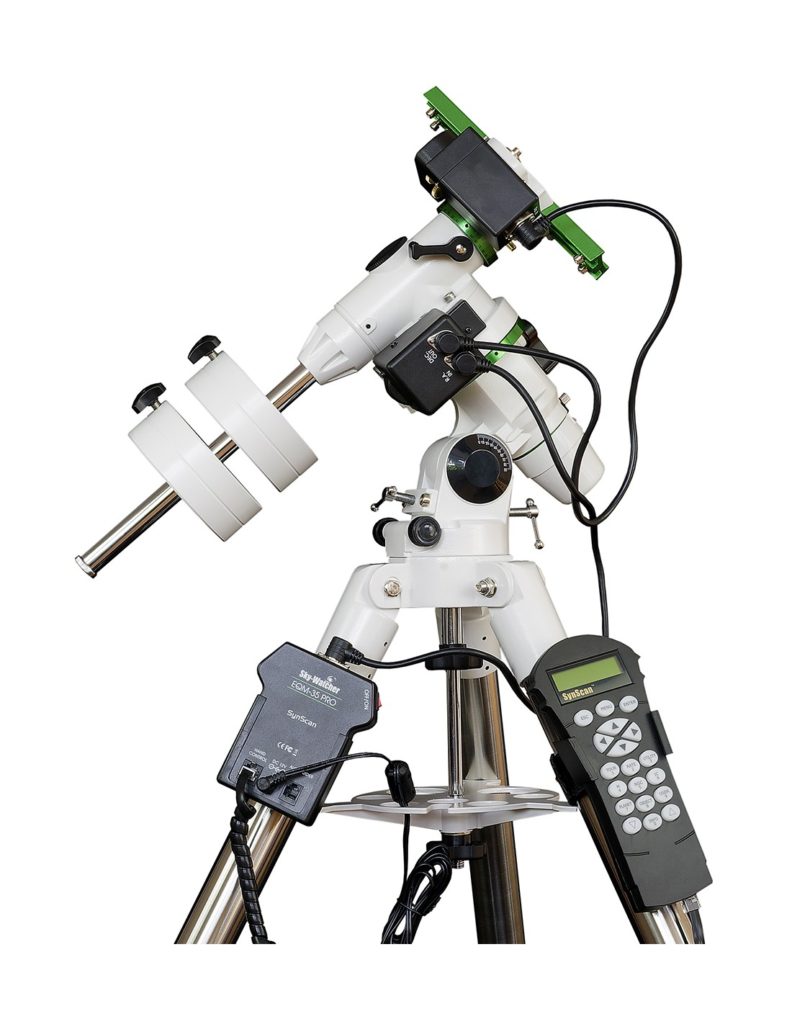
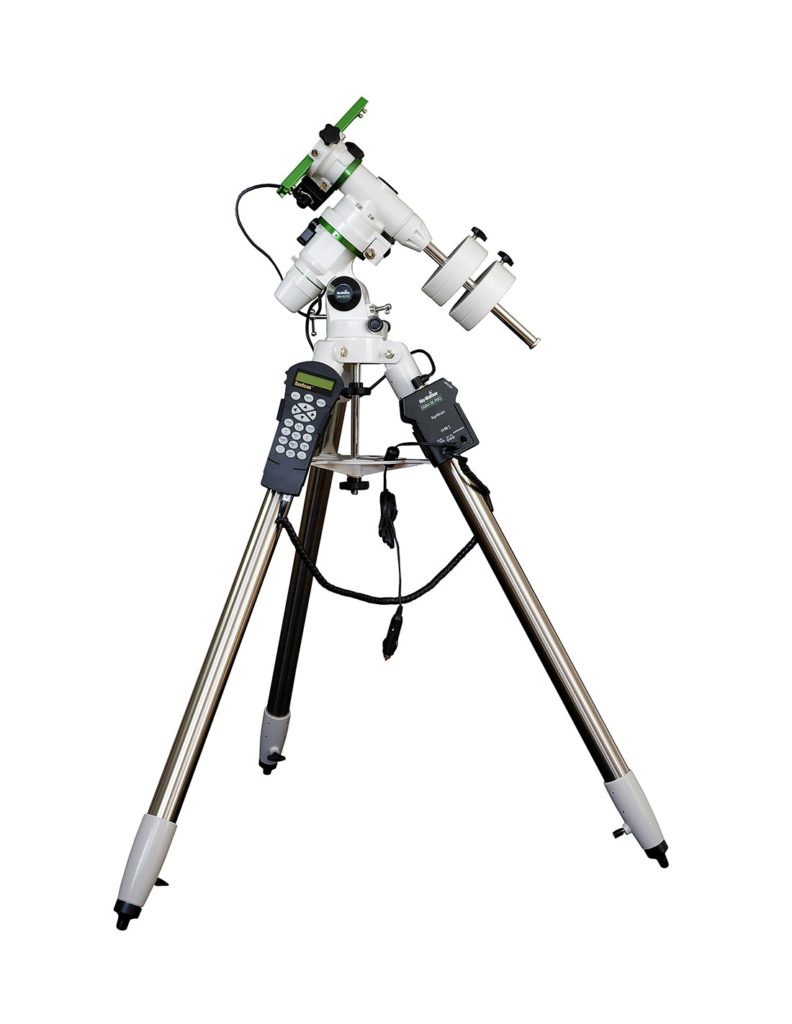





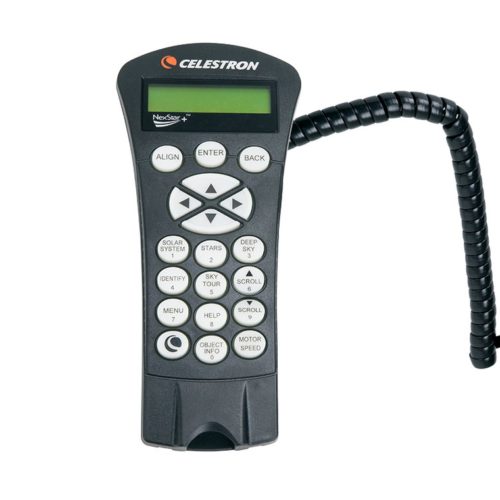
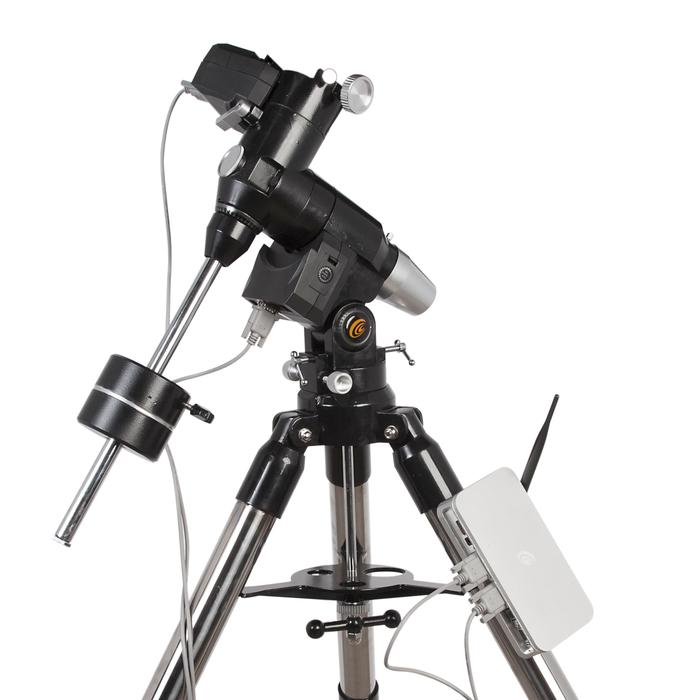
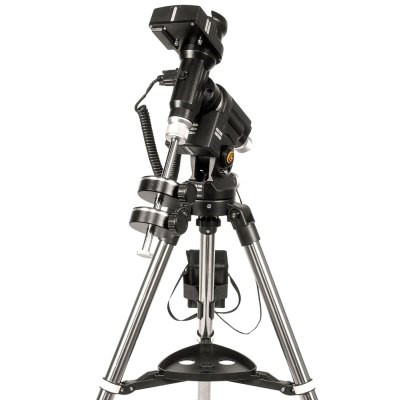
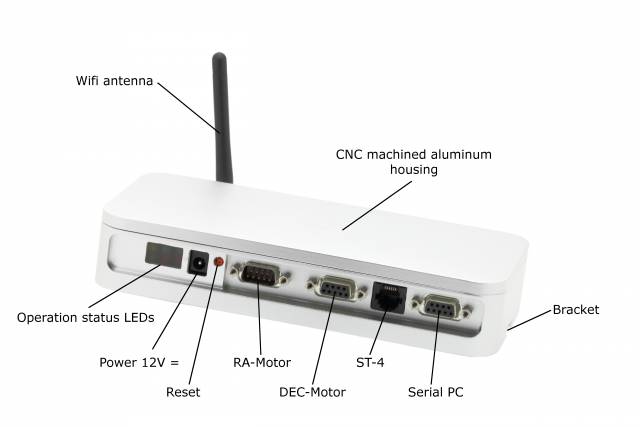


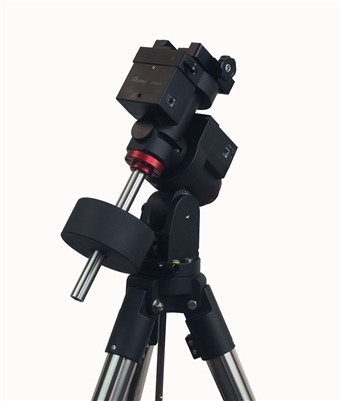
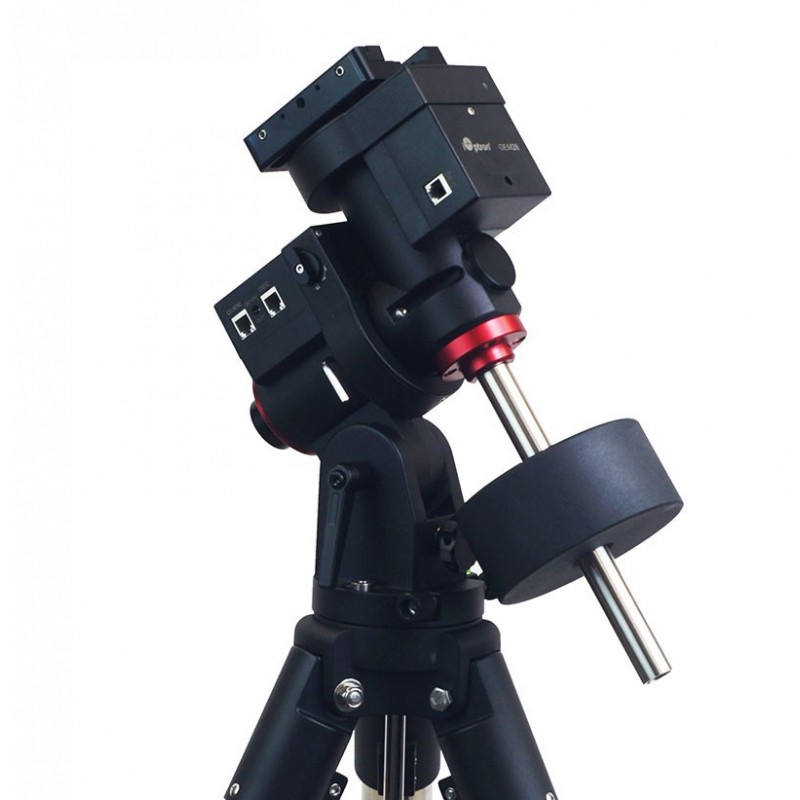
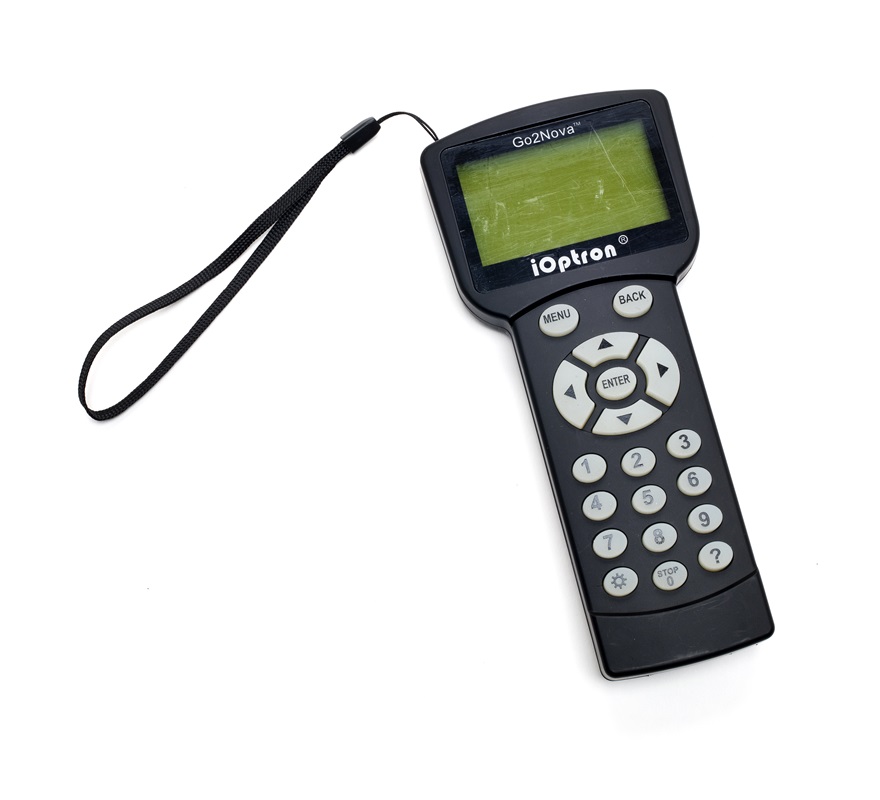
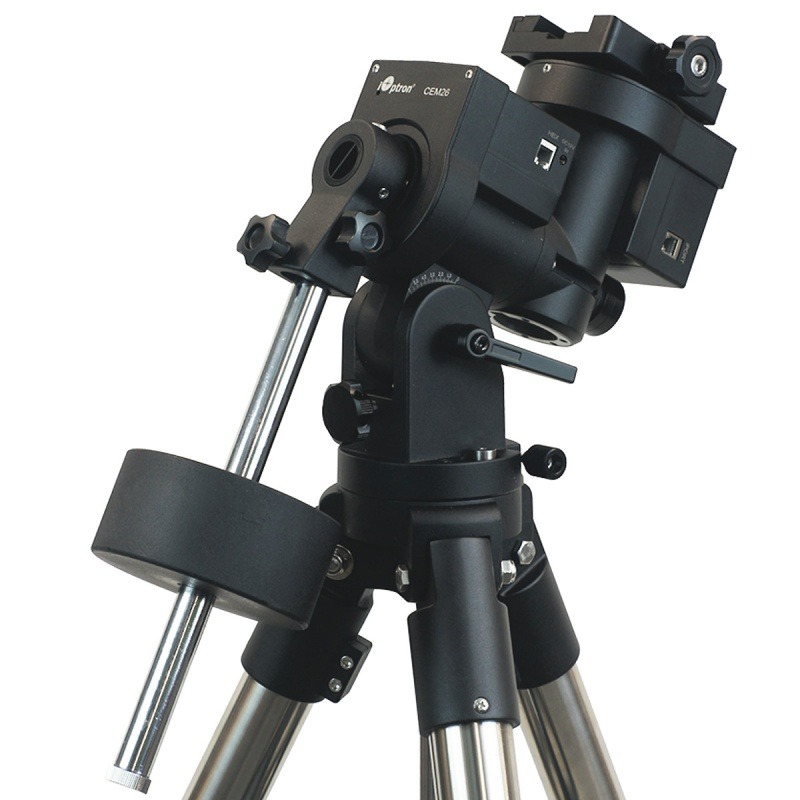
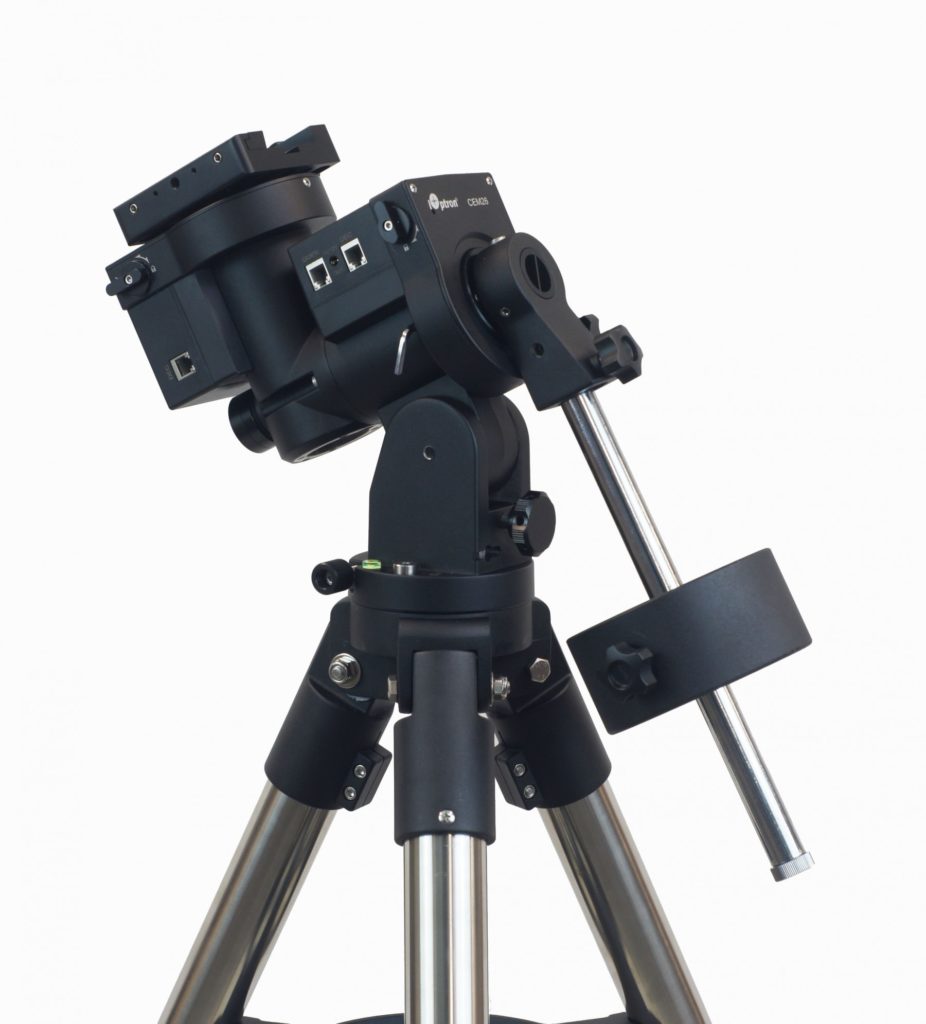



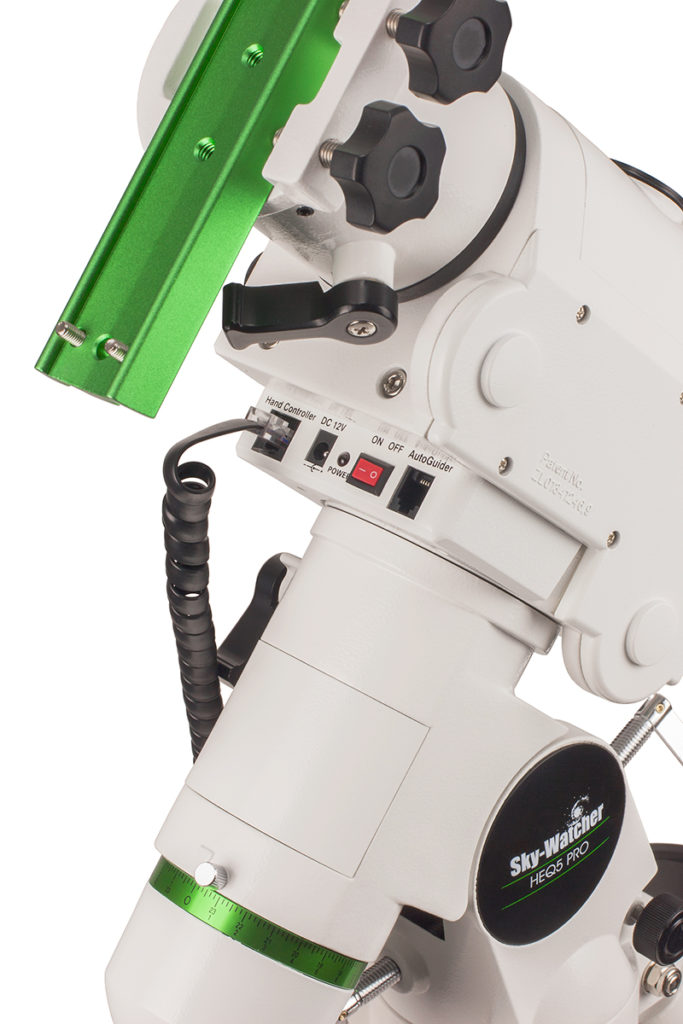
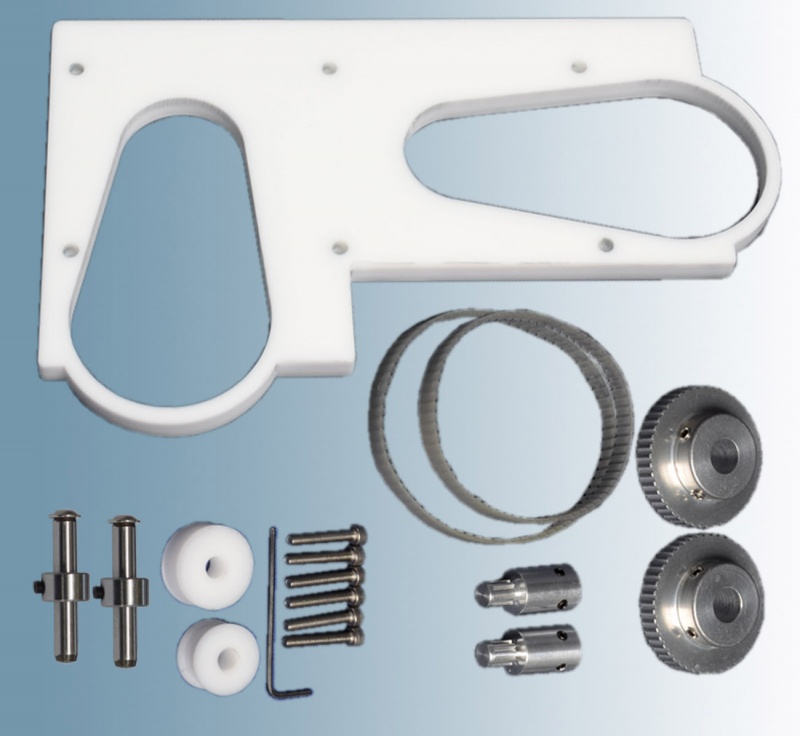
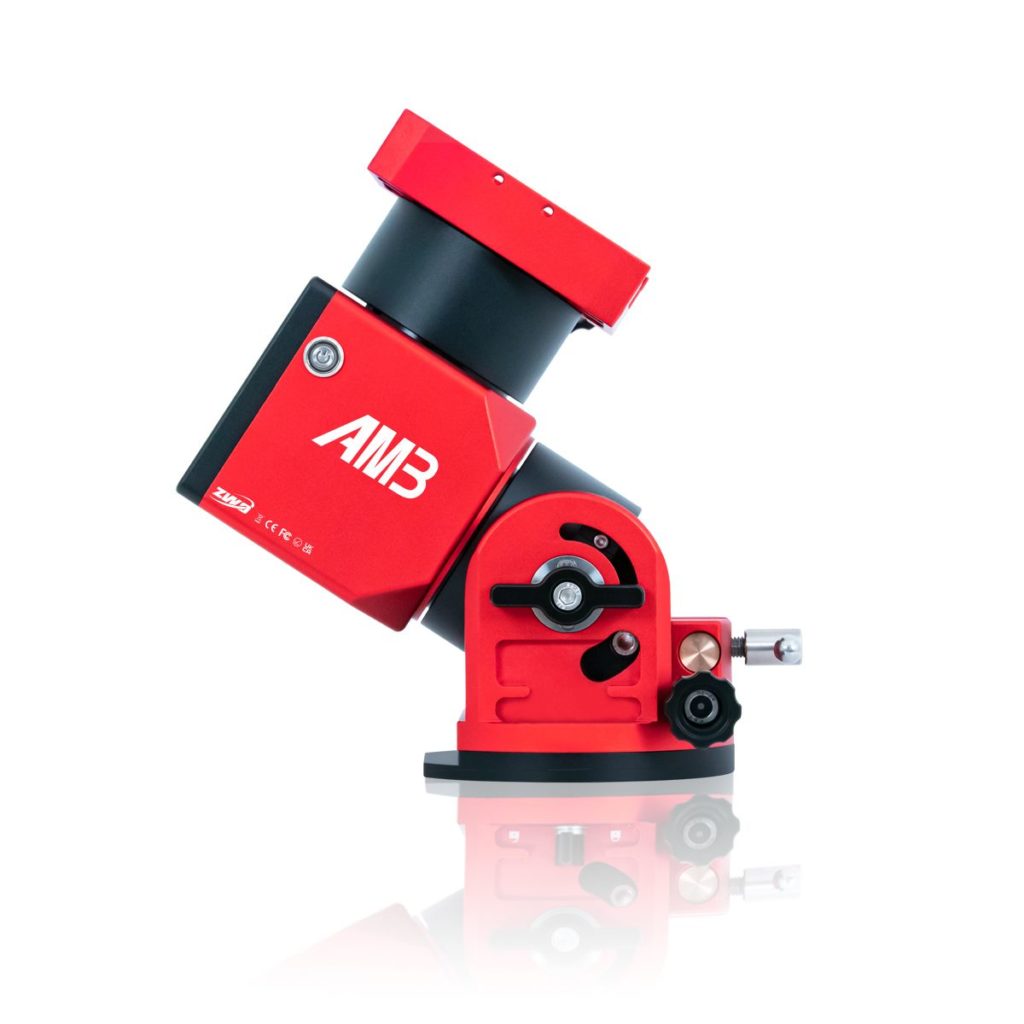





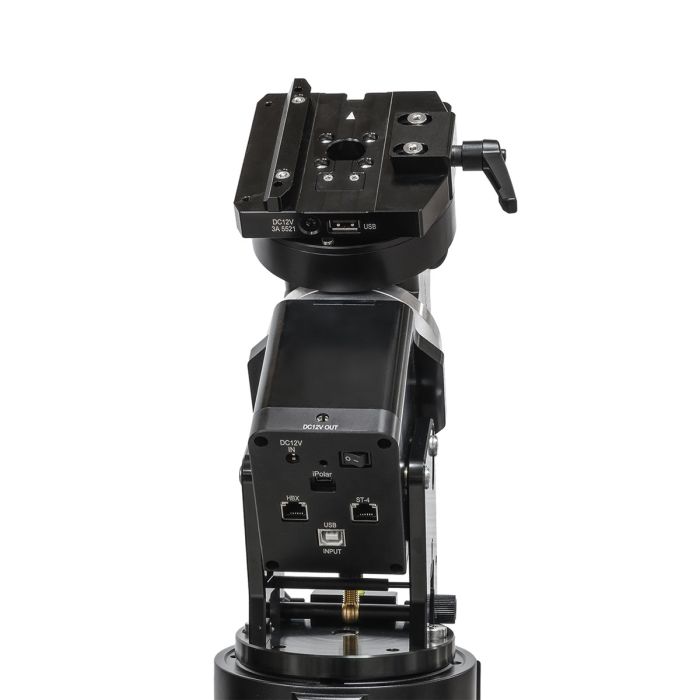
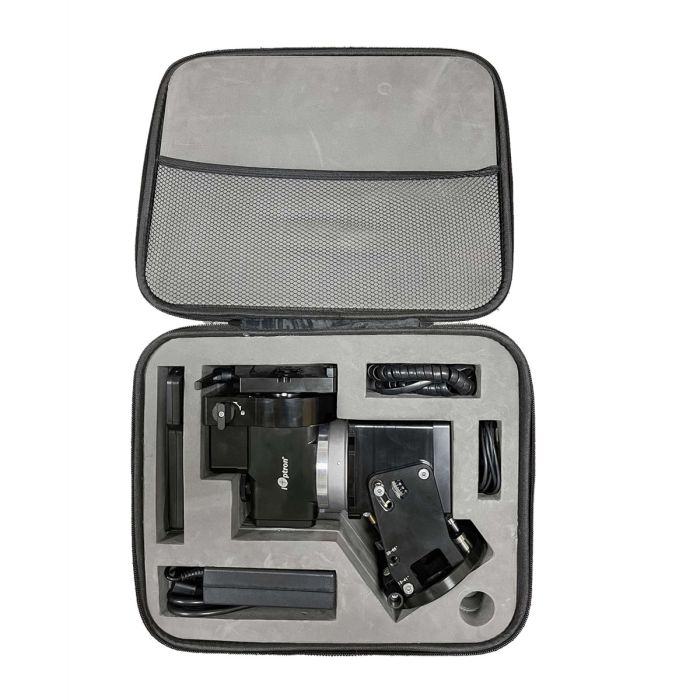
I just replaced a SW EQ5 SynScan with an ES iEXOS-100 PMC-8 and Medium Duty tripod. The iEXOS-100 is lighter and cheaper and actually performs better than the EQ5 did with my image train at 5.5kg. I’m guiding consistently below 1.5 RMS ArcSec and sometimes below 1″ with an WO73 ApoII and a Nikon D750. I think the iEXOS-100 is worth consideration for beginners.
Thanks for sharing!
Great, good luck with your setup!
I have the Orion Sirius eq-g mount and love it. I use it with my Redcat 51 and Astrotech 72ed refractors. The only problem is the RA an Dec controls are a bit hard to adjust. But is useable.
Hi Wido,
I’m wondering if you have any experience with harmonic mounts like the new ZWO AM5. Would you recommend a harmonic mount over the traditional kind of mounts?
Thanks so much again for all the information you provide!
Greg
Not yet, but I’m thinking about buying one, so stay tuned :-).
About how much weight in addition to the optical tube should I expect to put on a mount?
cameras, filterwheels and guide scopes usually do not weigh more than one to three kilograms (max. 6 pound)